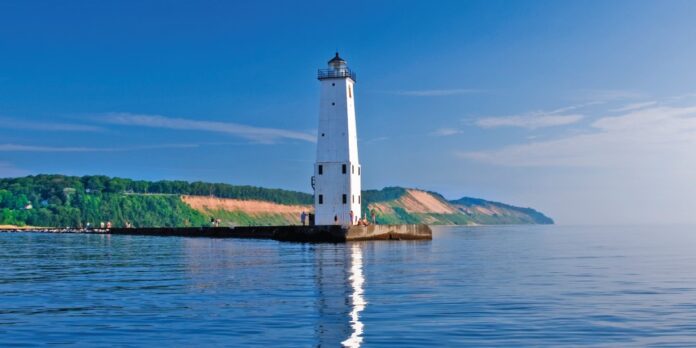Lake Michigan is one of the five Great Lakes of North America and is the only one entirely located within the United States. It spans a total of 22,400 square miles and touches the shores of four states: Michigan, Wisconsin, Illinois, and Indiana. Despite being a large body of water, it has significant cultural, economic, and ecological implications for the regions it touches.
The eastern shoreline of Lake Michigan, which includes the states of Michigan, Indiana, and Illinois, is home to bustling cities such as Chicago, Milwaukee, and Detroit, as well as many smaller towns and villages. These cities are important economic centers that contribute significantly to the economies of their respective states. The tourism industry is also prominent, with visitors coming to enjoy the beaches, parks, and attractions along the lakefront. The Indiana Dunes National Park and the Sleeping Bear Dunes National Lakeshore in Michigan are two such examples of popular tourist destinations in the region.
The western shoreline of Lake Michigan, which is located in Wisconsin, is less urbanized and more rural, with small towns, farming communities, and natural areas dominating the landscape. The region is known for its scenic beauty, with rolling hills, forests, and pristine lakes and rivers. Outdoor recreation, such as hiking, fishing, hunting, and boating, is a significant part of the region’s economy and way of life. The Kettle Moraine State Forest and the Chequamegon-Nicolet National Forest are two examples of natural areas that draw visitors to the region.
While the regions on either side of Lake Michigan share some similarities, there are also significant differences that stem from their unique histories and geographies. The eastern side of the lake has been shaped by the Great Lakes shipping industry, which has relied on the waterways to transport goods between the Midwest and the East Coast for centuries. The region is also home to some of the nation’s largest and most influential cities, which have played a significant role in American history and culture. The western side of the lake, on the other hand, has been shaped by a different set of factors, including farming, logging, and tourism.
Despite these differences, Lake Michigan serves as a unifying force for the regions it touches, providing a shared natural resource that has brought people together for centuries. It is a source of beauty, recreation, and inspiration, and its significance to the people who live in its shadow cannot be overstated.
In contrast, the state of Utah, located in the western United States, is a landlocked state that is known for its stunning natural beauty and outdoor recreational opportunities. The state is home to five national parks, including Zion, Bryce Canyon, and Arches, as well as numerous state parks and other natural areas. These destinations draw millions of visitors each year and contribute significantly to Utah’s economy.
While Lake Michigan and the states of Michigan, Wisconsin, Illinois, and Indiana form a cohesive region united by their shared connection to the lake, Utah is a unique state that stands out for its natural beauty and outdoor recreation opportunities. Despite their differences, all of these regions have much to offer and are beloved by those who call them home.
Views: 50






